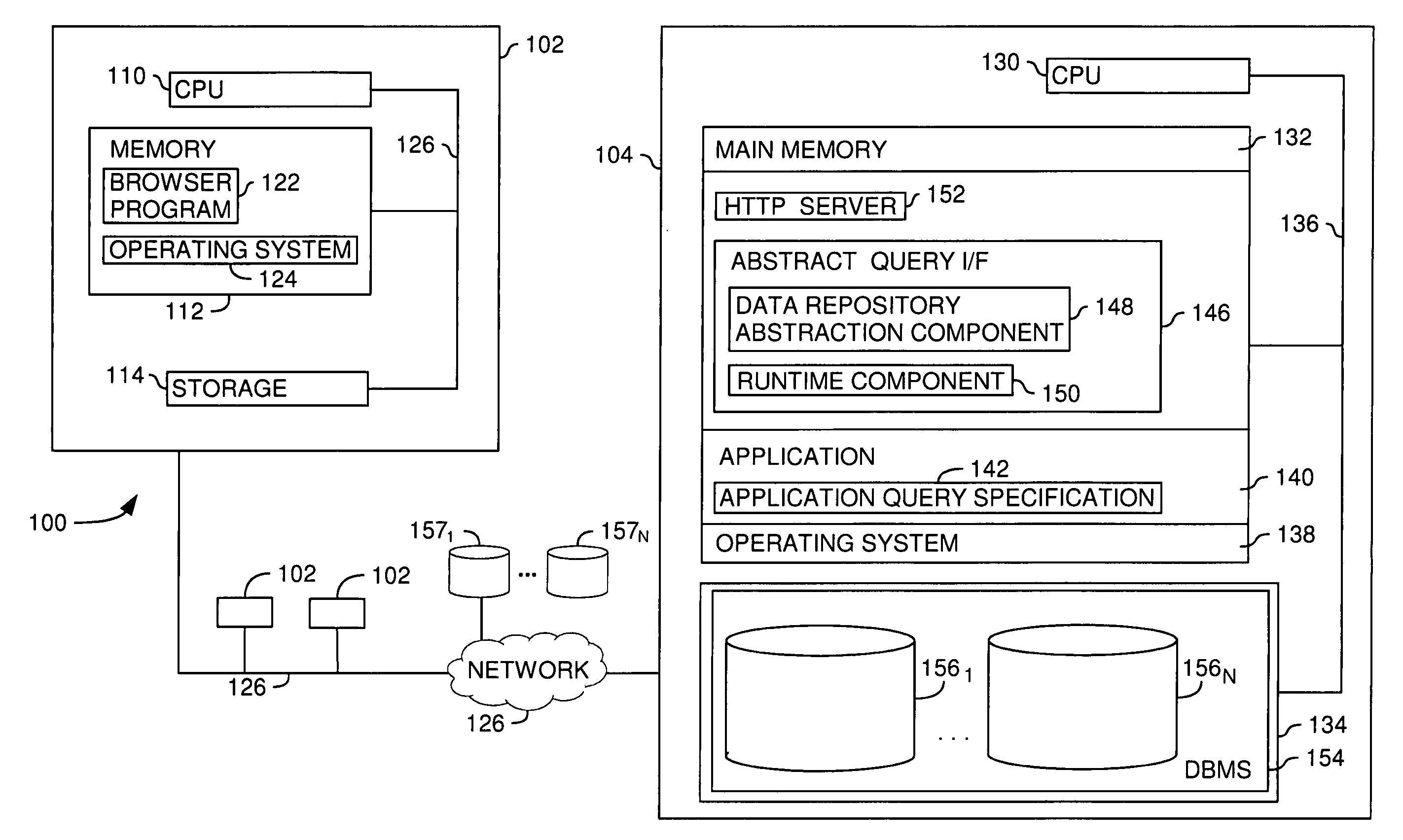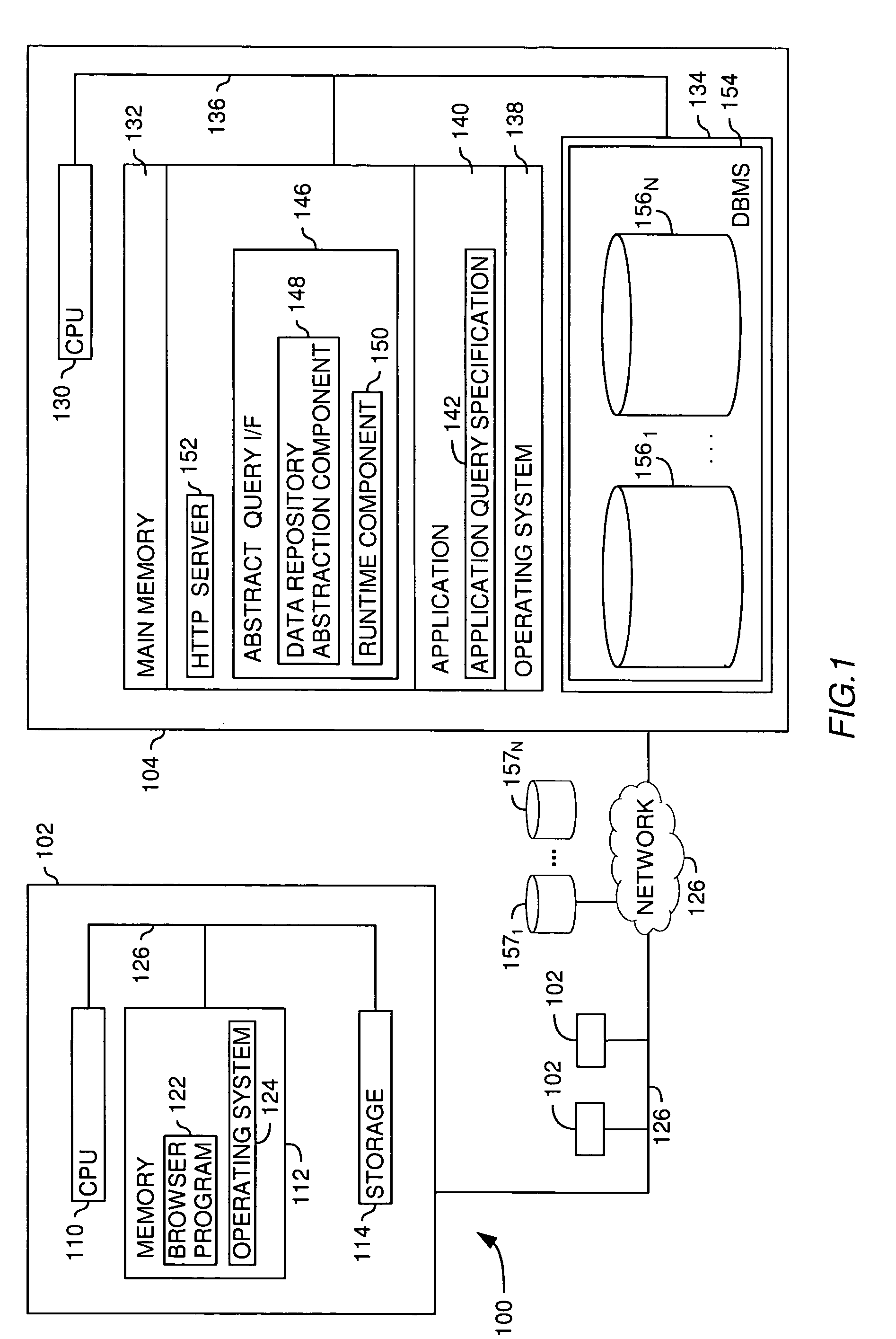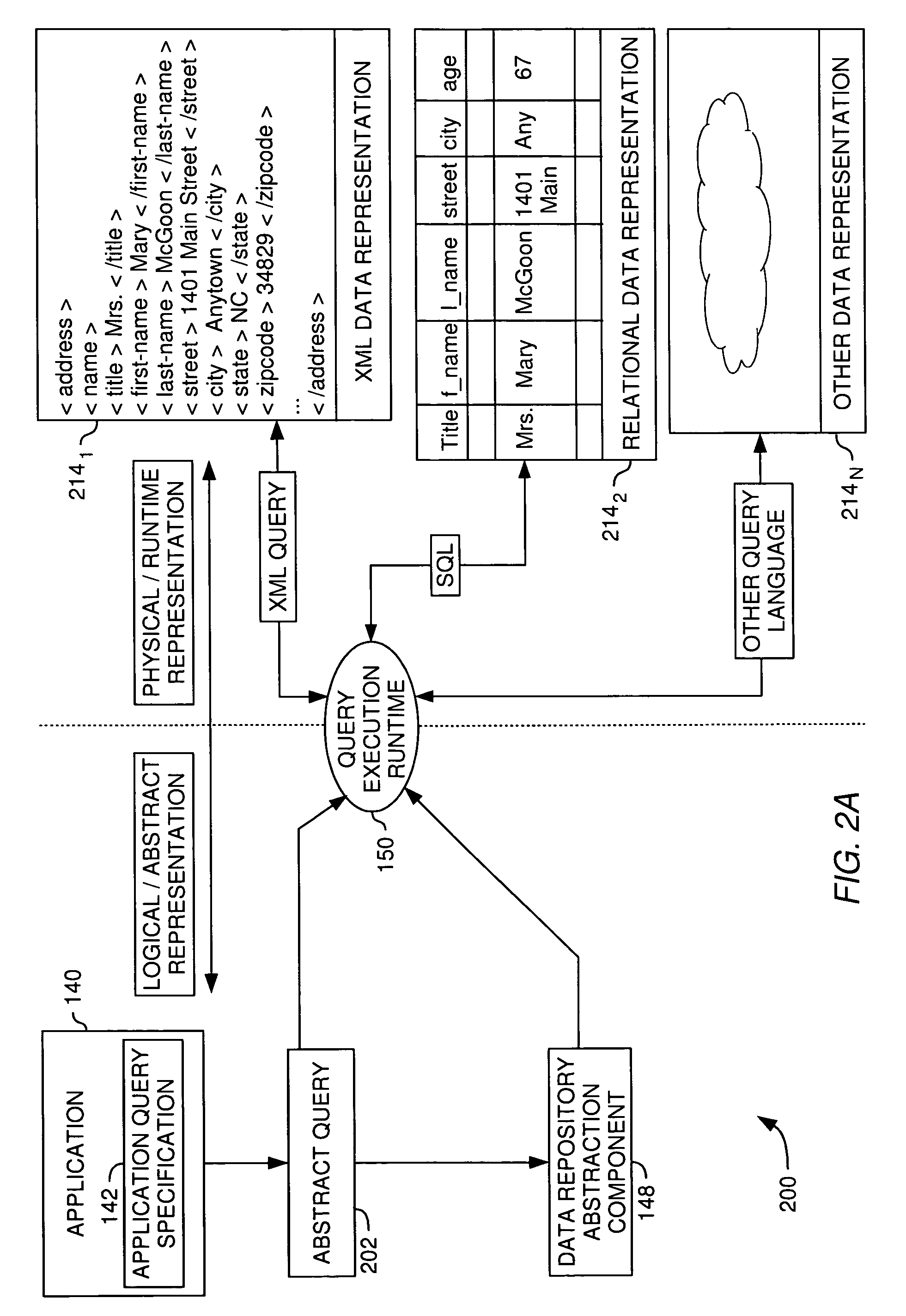Extending data access and analysis capabilities via abstract, polymorphic functions
a data access and analysis capability technology, applied in the field of computer databases, can solve the problems of affecting the migration of applications to alternative underlying data representations, affecting the stability of data access and analysis,
- Summary
- Abstract
- Description
- Claims
- Application Information
AI Technical Summary
Problems solved by technology
Method used
Image
Examples
Embodiment Construction
[0027] The present invention generally provides methods, systems, and articles of manufacture that extend the capabilities of an abstract database to include “late bound” polymorphic functions in an abstract data layer. Abstract functions are “late bound” because the function definition (i.e., the execution logic) is not determined until the function is actually invoked. They are polymorphic because the same function may operate using many different many data input types. Additionally, abstract functions are generally transparent to the end user. That is, they are presented to the user as an additional object that may be used to compose queries of data represented by the abstract data layer, undifferentiated from other objects provided by the abstract data layer.
[0028] In one embodiment, one or more “signatures” are used to define a different input group recognized by the abstract function. The input groups may be defined in terms of other entities defined in a data abstraction lay...
PUM
 Login to View More
Login to View More Abstract
Description
Claims
Application Information
 Login to View More
Login to View More - R&D
- Intellectual Property
- Life Sciences
- Materials
- Tech Scout
- Unparalleled Data Quality
- Higher Quality Content
- 60% Fewer Hallucinations
Browse by: Latest US Patents, China's latest patents, Technical Efficacy Thesaurus, Application Domain, Technology Topic, Popular Technical Reports.
© 2025 PatSnap. All rights reserved.Legal|Privacy policy|Modern Slavery Act Transparency Statement|Sitemap|About US| Contact US: help@patsnap.com



